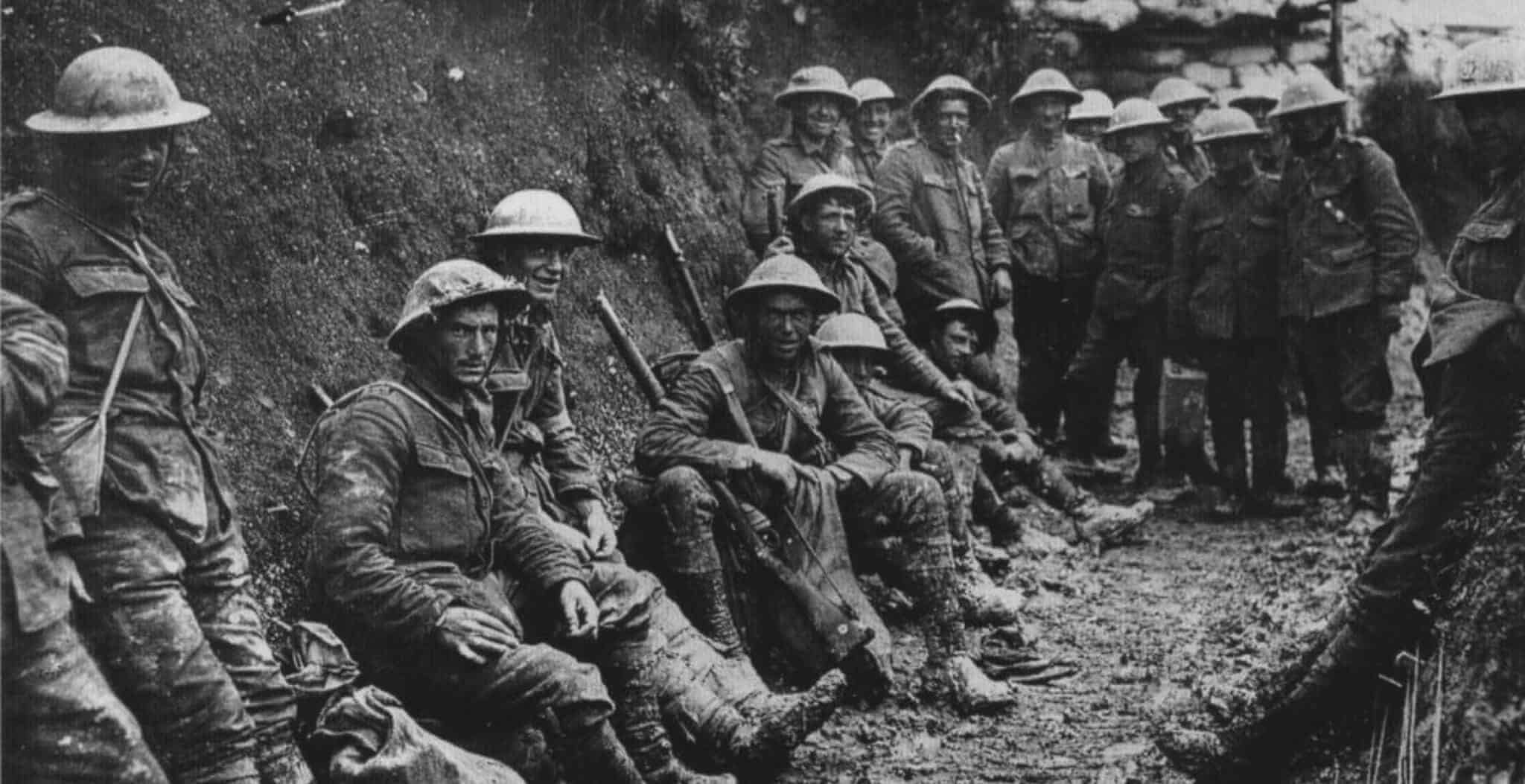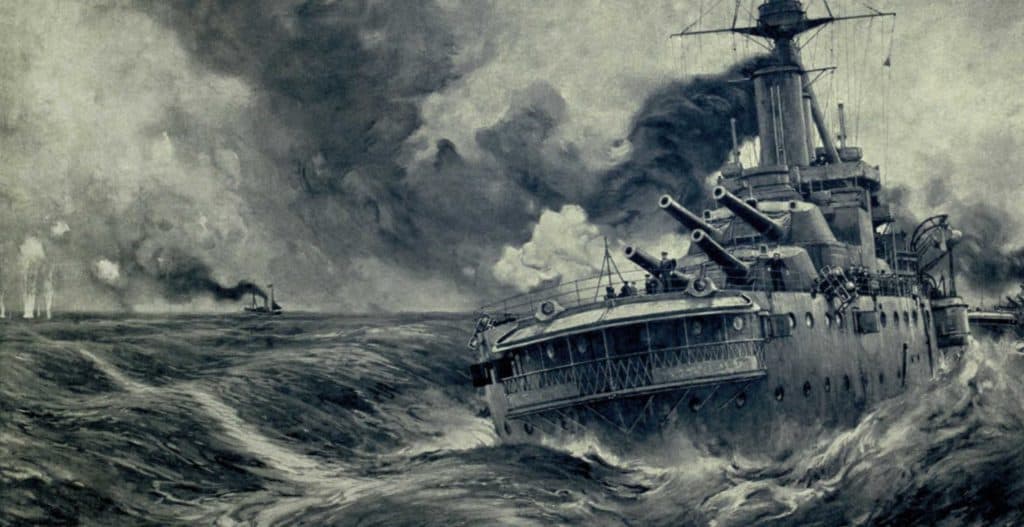This article is designed to tell the true story of what happened to the 1/5th Battalion Norfolk Regiment on 12th August 1915 at Kuchuck Anafarta Ova, Gallipoli, during World War One. Supported by recent research, it dispels many of the myths attached to the battalion including ‘disappearing into a cloud of smoke‘.
The first myth is that the 5/Norfolks were called the ‘Sandringham Battalion’ but this is not correct. It is incorrect because it recruited from all over North Norfolk, with companies being raised by towns as far apart as Great Yarmouth and Dereham. In fact what was known as ‘E’ Company (The Sandringham Company) ceased to exist on February 8th 1915, when during a major reform they converted to a 4 company battalion, merging with C Company to become ‘King’s Company’.
The second myth has to be covered by considering a number of claims:
- A dispatch by Sir Ian Hamilton reported, ‘But the Colonel, with sixteen officers and 250 men, still kept pushing on, driving the enemy before them. … Nothing more was ever seen or heard of any of them. They charged into the forest and were lost to sight or sound. Not one of them ever came back.’
- When the 50th Anniversary of Gallipoli came round in 1965, references to the Sandringham Company, Battalion and Regiment first started to emerge when three New Zealand veterans claimed to have seen a British regiment marching up a sunken road to be swallowed up in a cloud.
- This led to other theories that they had been kidnapped by aliens who had landed in flying saucers and a book and TV adaptation depicted a highly charged new solution to the mysteries, suggesting they had been executed by the Turks.
We know that a number of the Norfolks managed to advance 1400 yards to a sunken road before stopping and awaiting the rest of the battalion. Second Lieutenant Fawkes commanded this small group and he was ordered to press on by the C.O. Colonel Proctor-Beauchamp. Virtually all of them were taken down when they bunched up in a gap covered by a machine gun.
A small element of the Norfolks managed to reach a small vineyard and another element managed to get to a group of small cottages where they were joined by Colonel Proctor-Beauchamp and the Adjutant. Beauchamp was seen by Private S T Smith to say ‘Hound them out boys!’ It was the last time he was seen alive and probably the last order he ever gave.
It was here that the surviving officers managed to take stock of what had happened and Major W Barton and Lieutenant Evelyn Beck led the survivors back to friendly lines when it became dark. And the mystery was, in fact, cleared up by the press very early on.

Private 1432, Cecil Ernest Bullimore, killed in action on 12th August 1915
The local papers initially reported the loss of 5th Norfolk officers on 28th August 1915 and accounts from men who were there were published soon after, especially in the Yarmouth Mercury and the Lynn News. One article dated 27th August 1915 noted:
‘It is with the deepest regret that we publish the list of missing officers of the 5th (Territorial) Battalion of the Norfolk Regiment. At the time of going to press, no further information is available than the bare fact that they are missing.’
Hamilton’s dispatch did not appear until 6th January 1916 and on 7th January 1916 the Eastern Daily Press reported, ‘SANDRINGHAM MEN DISAPPEAR.’ The article went on to state that 16 officers and 250 men pushed deep into enemy lines and ‘…were lost from sight and sound. None of them ever came back.’ This directly quoted Hamilton’s after action report.
But on 15th February 1916 the Lynn News reported that one officer was now recovering from wounds in a hospital as a prisoner of the Turks in Constantinople and noted:
‘This news of Capt. Coxon will come as a relief to not only his friends but also to those who are still awaiting news of other officers and men of the 5th Norfolks. It is obvious that an officer in hospital would have greater opportunities for writing home to his friends than others who were not wounded but are prisoners of war.

And there is an excellent article printed in the Lynn News from a survivor:
‘I did not see anything of the missing officers after I got lost. I heard the Colonel call out when we approached the huts I have referred to, but I did not see him then. I did not hear him again afterwards. During the attack I did not see anything of Capt Pattrick. I did not see any wood into which the officers and men could have disappeared, and I certainly did not see them charge into a wood: in fact the Norfolks did not charge as far as my knowledge goes. I know absolutely nothing about how the officers and men disappeared. At first, like others, I thought that the officers and men who are now reported missing had returned to other trenches but later I found that this was not the case. I inquired a lot about them but all I could find out was that they had disappeared-vanished. We could only come to the conclusion that they had advanced too far, had been captured and made prisoners of war. We knew that some of the men had been killed and others been wounded, so it did not seem at all unlikely that these others had been captured by the enemy. I heard no news about the 5th Norfolks charging into a wood until I came home.’
Private Sidney Pooley 1/5th Norfolk Regiment.
As with countless engagements in World War One, the bodies of the men who fell that day did not have the luxury of a burial detail. In fact, they lay where they fell until 1919 when the battalion’s Chaplin the Reverend Pierrepoint Edwards found them and reported at the time:
‘We have found the 5th Norfolks – there were 180 in all; 122 Norfolk and a few Hants and Suffolks with 2/4th Cheshires. We could only identify two – Privates Barnaby and Carter. They were scattered over an area of about one square mile, at a distance of at least 800 yards behind the Turkish front line. Many of them had evidently been killed in a farm, as a local Turk, who owns the place, told us that when he came back he found the farm covered with the decomposing bodies of British soldiers, which he threw into a small ravine. The whole thing quite bears out the original theory that they did not go very far on, but got mopped up one by one, all except the ones who got into the farm.’
And the actual casualty list, recorded between 12th and 31st August 1915, is 11 Officers and 151 Other Ranks killed. This total comes from a database called ‘Soldiers Died in the Great War’.
Supported by recent research, this article may perhaps help to clarify what actually happened to the 5th Battalion Norfolk Regiment and acknowledges their bravery and tenacity in the face of an extremely determined enemy.
By Steve Smith.
Also by Steve Smith:

‘And They Loved Not Their Lives Unto Death: The History of Worstead and Westwick’s War Memorial and War Dead’ by Steve Smith.
Available from amazon.co.uk







